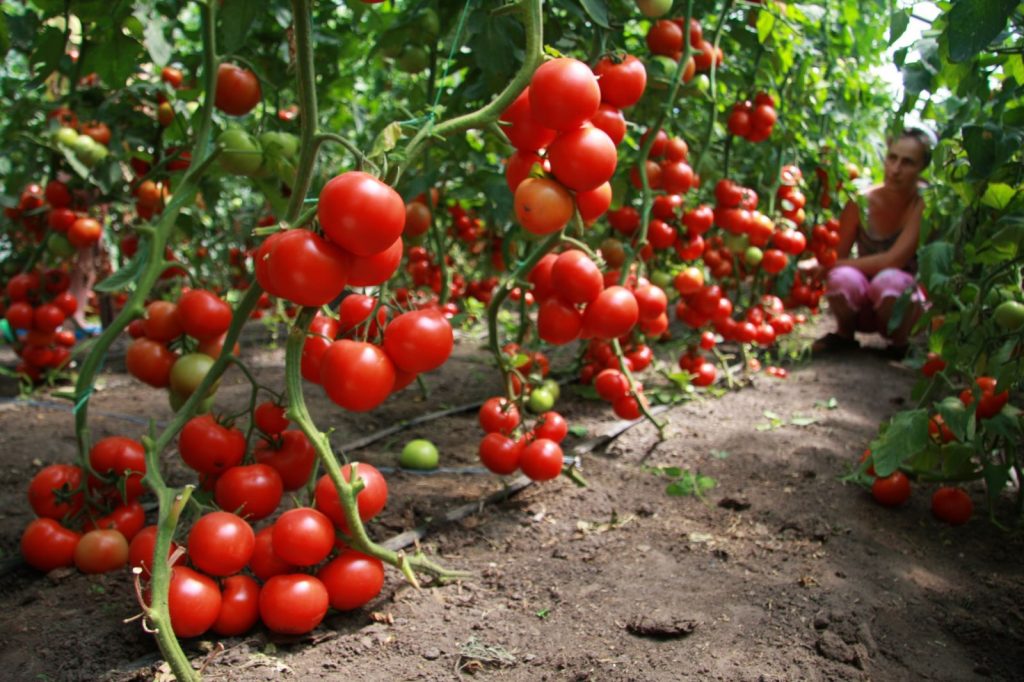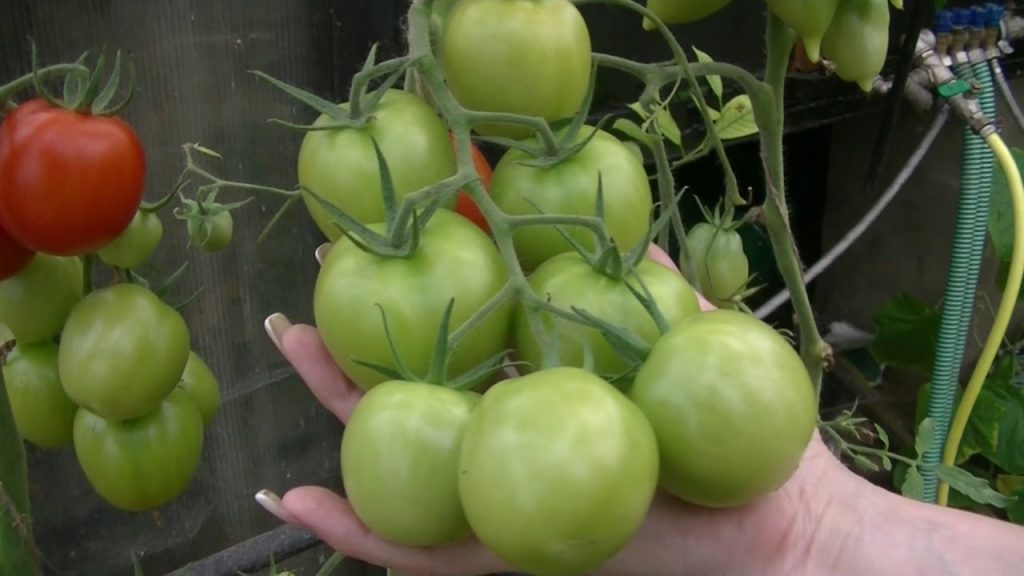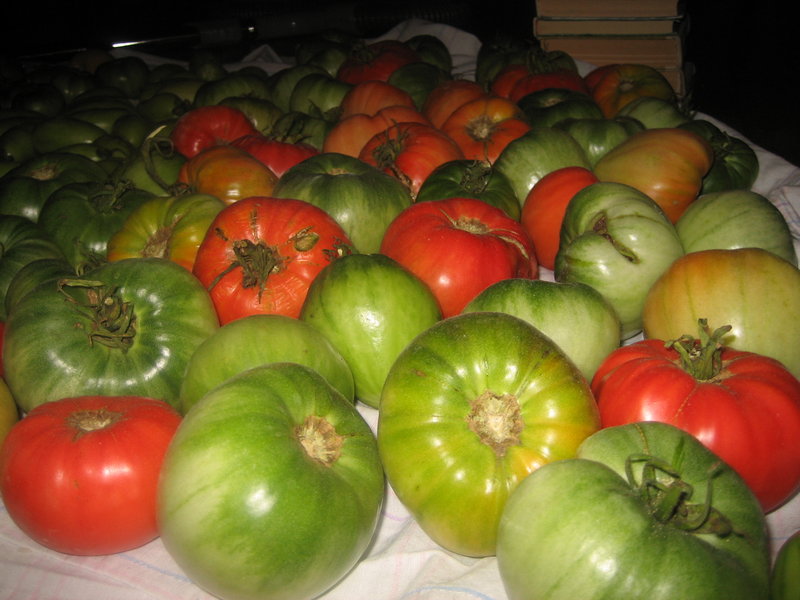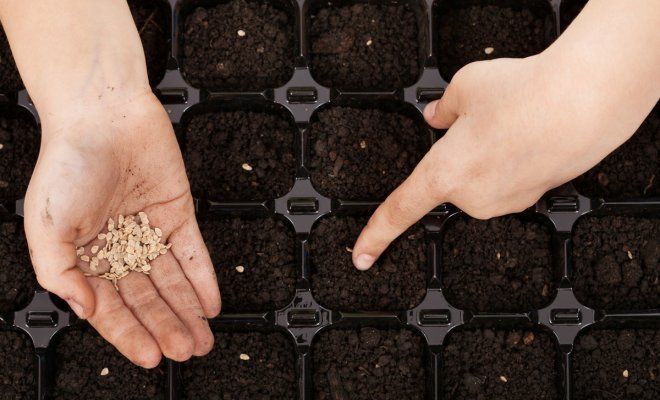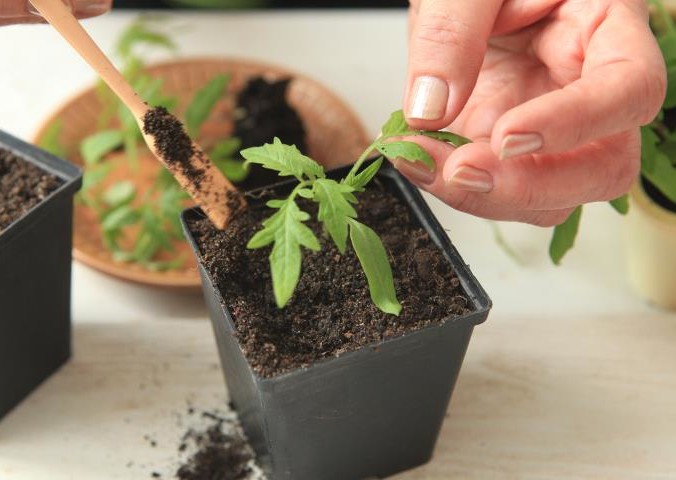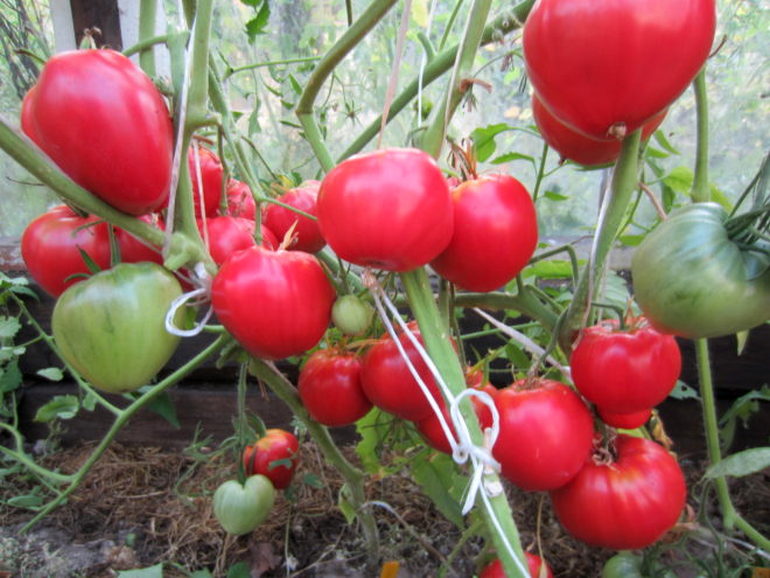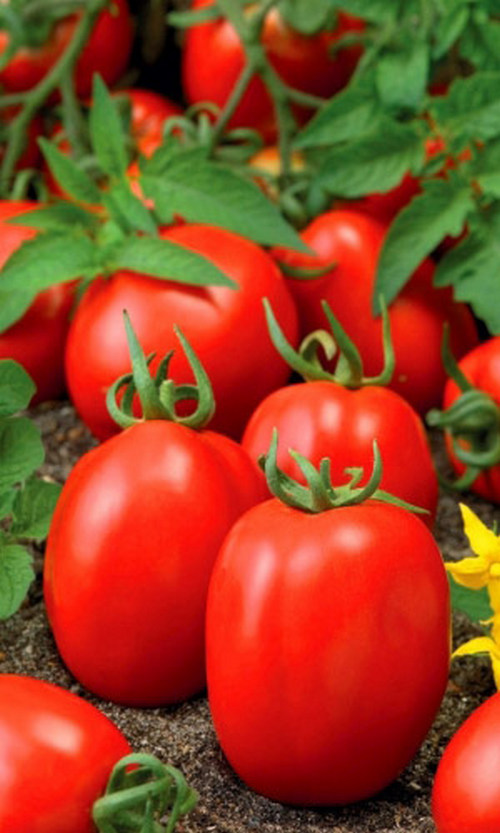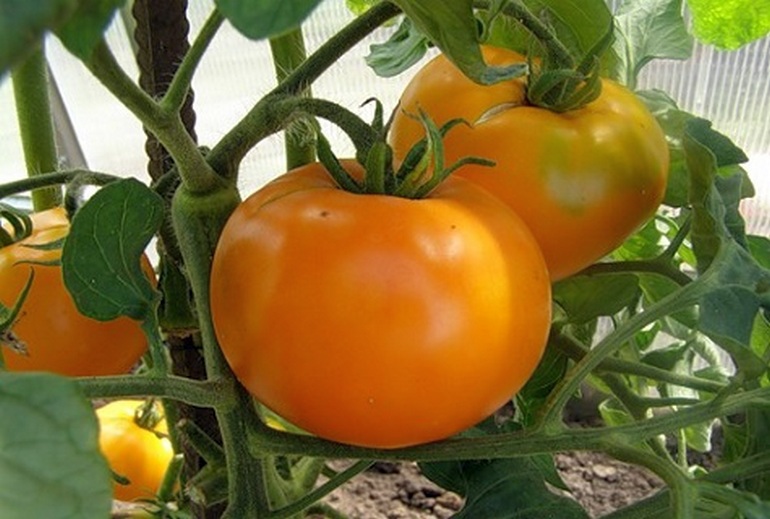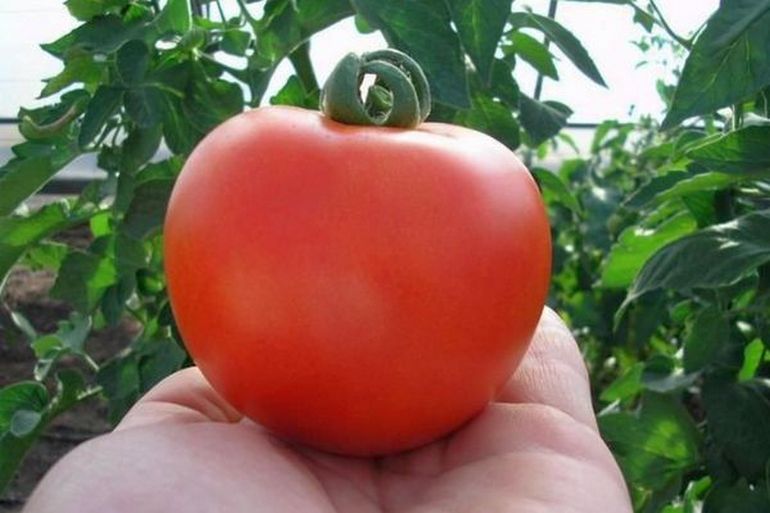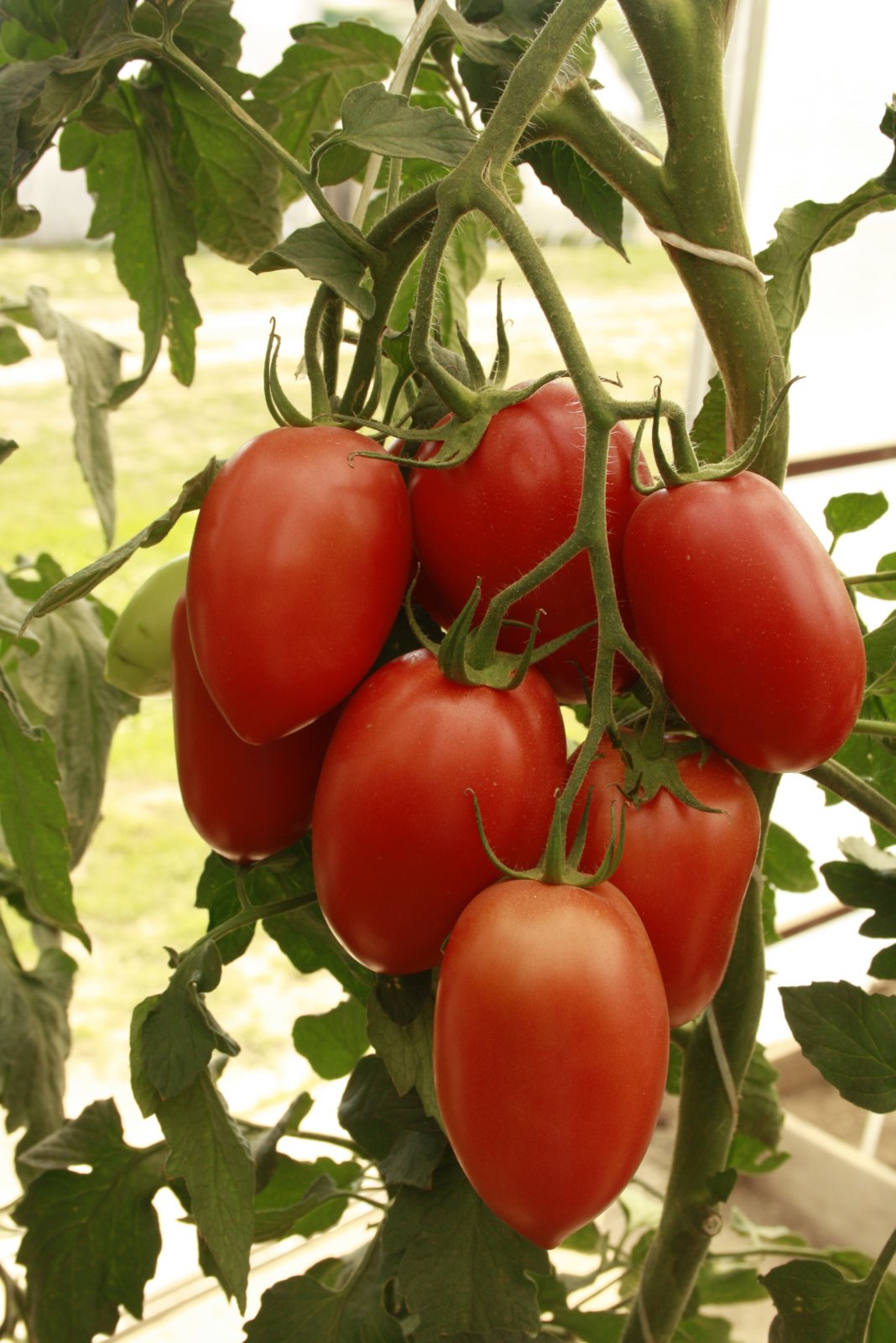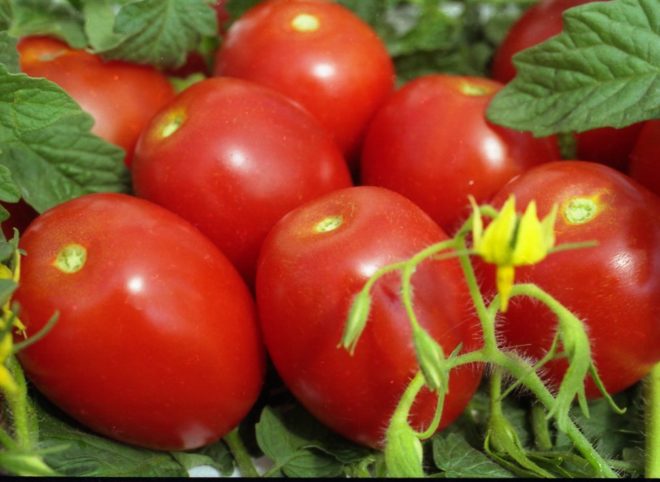Content:
Any amateur gardener will certainly have his own, well-proven collection of tomato crops. It usually includes plants with consistently high yields, as well as a pleasant taste and good disease resistance. These varieties, without any doubt, include the familiar to many Tolstoy tomatoes f1.
A bit of history
The Dutch company "Bejo Zaden" is considered to be the ancestor of the Fat Man tomato. Its specialists developed a tall variety in the last century, which was intended specifically for unprotected soil. It was named after the genius of Russian thought L.N. Tolstoy and fully met the expectations of breeders.
Simultaneously with planting on open beds, it was allowed to grow in greenhouses or under a film, which fully corresponded to the declared ripening period (initially it was positioned as medium early).
According to the reviews of amateur gardeners, Tolstoy's tomato can be attributed to crops that have not only high, but record yields. At the same time, the fruits of this plant are distinguished by excellent taste, and it itself does not need special care during development.
Characteristics and description
The plant and its bush
Tomato Lev Tolstoy proposed for consideration, the characteristics and description of the variety of which are given in this section, refers to mid-early crops. This follows from the fact that from the moment of sowing the seeds to the appearance of the earliest fruits, approximately 110-112 days pass.
At the same time, in a greenhouse well protected from frost (heated) from the Fat Man bush, it is possible to get 2-3 harvests per year.
Since the noble Fat Man's tomatoes belong to fairly tall crops, it is necessary to tie the branches to the trellises or stakes. Moreover, all brushes on the bush need this operation at once, and there can be up to 12 of them on it. At the same time, one separate brush can immediately bring 10-12 tomatoes, each weighing about 125 grams.
Fruit
The following characteristic features are considered a feature of this variety:
- In shape, the fruits of the tomato Leo Tolstoy are rounded-flattened, in the region of the stalk they are distinguished by ribbing;
- The bush is arranged in such a way that the largest tomatoes are usually located on the lowest branches;
- Individual specimens of such fruits by weight can reach about 500 grams;
- A regularity has been noted according to which the higher the branch of the tomato variety Fat F1 is, the smaller the tomatoes themselves;
- The surface of the tomatoes themselves is quite even and relatively smooth;
- It has a glossy, dense, but not very hard skin;
- There are no undesirable manifestations such as cracking of the fruit surface in this variety.
They ripen very amicably, pleasing the eye with good results (large volumes of fruiting). Finally, this variety easily tolerates long-term transportation, and on the way the tomatoes practically do not crumple and do not lose their natural taste.
Tolstoy F1 tomato grown in greenhouses and in the garden has a very pleasant taste and sweet juicy pulp. Inside a fully ripe tomato you can find 5 or 6 chambers filled with seeds. In the process of ripening, the fruits change their color from light green to deep red. As for the yield of this variety, according to available data, it is sometimes possible to collect up to 15 kg of fragrant fruits from a tomato bush.
In addition, its distinguishing feature is its enviable resistance to most vegetable diseases characteristic of crops from the Solanaceae family.
Application and storage procedure
According to various sources, Tolstoy tomatoes whose characteristics and description of the variety are discussed above are quite rich in vitamins and various amino acids. On the basis of the ripe fruits of this versatile culture, you can prepare a variety of salads, and also use them as a seasoning. The Tolstoy tomato variety is also suitable for conservation, during which the fruits themselves retain their shape and do not crack for a long time.
They also produce a very pleasant-tasting tomato juice, to which practically no sugar is added. Salty or pickled green tomatoes that are unusual in their taste are also very popular.
Tomato Tolstoy is distinguished by extended ripening periods, which is why, in the conditions of central Russia, even when grown in a greenhouse, all the fruits do not have time to turn red to the end. But this usually does not cause problems, since green tomatoes can ripen directly at home. It is possible to preserve them in this way until the New Year.
Tomatoes ripening in boxes or in other places at home in their taste conditions practically do not differ from those that are plucked from the bush.
Vegetation and care
Sowing seeds
Tolstoy tomato as a tomato variety is propagated by seeds, which are sown as seedlings at the very end of March. The order of the operations carried out in this case is given below:
- First, light soil is loaded into a planting container of the appropriate size, which is a mixture of humus and garden soil;
- The resulting earthen composition is then fed with a small amount of wood ash, and then spilled with boiling water with potassium permanganate dissolved in it;
- Immediately before planting, the seeds are disinfected with hydrogen peroxide, or they are kept for some time in a weak solution of potassium permanganate;
- Sometimes, to accelerate germination, they are soaked in biostimulants for about 12 hours.
In the process of sowing, the seeds are buried in the prepared soil by about 1.5 cm and covered with the same soil. After that, they are carefully watered from a watering can with a divider, and then covered with transparent film and placed in a warm place.
The first shoots are usually cut through already on the 4-5th day, after which the containers are placed on a well-lit windowsill and watered as needed (drying out of the soil is not allowed).
Picking and planting in the soil
As soon as the first three leaves appear on the seedlings on the windowsill, it must be immediately transplanted into separate containers with nutrient soil. At the same time, it is recommended to feed the transplanted shoots with complex mineral fertilizers.
Over the next several days, the seedlings are kept in a shaded place, after which they are exposed on a windowsill well-lit by the sun's rays. With a lack of light, additional radiation is arranged over it (in the form of fluorescent or conventional lamps).
For watering young shoots, small volumes of water are used to prevent stagnation. After moistening the soil, its top layer is necessarily loosened (deep loosening is undesirable, since this can damage the roots that are not yet strong).
Tomatoes should be planted in a garden bed or greenhouse with the arrival of stable warm weather, which excludes the possibility of morning frosts. It is allowed to transfer it to unprotected soil in the garden bed only when the temperature reaches 15 degrees. Immediately before transferring, young seedlings must be hardened, taking them outside for some time.
The soil in the beds, right before planting, is thoroughly dug up, after which fertilizers are introduced into it and shed well.
Holes for future bushes are made at a distance of about 40 cm from one another, and the aisles are arranged at a distance of about 60 cm. The seedlings planted in the soil should be thoroughly spilled with water warmed in the sun (subsequent watering is organized only after a week).
Advantages and disadvantages
The advantages of Tolstoy tomato include:
- High yield and the ability to plant in any soil;
- Resistance to major garden diseases;
- Excellent taste of fruits and ease of care for growing bushes;
- The versatility of the use of plant fruits.
However, it also has disadvantages, namely:
- Tomato develops very poorly on soils with a deficiency of the nutrient medium;
- At the same time, the number of brushes on the bushes and the total mass of tomatoes are noticeably reduced;
- The variety is not sufficiently resistant to late blight (this deficiency is most pronounced during the rainy season).
In conclusion, we note that in all other respects, Tolstoy tomatoes correspond to the name given to them and provide gardeners with a rich harvest every season.
